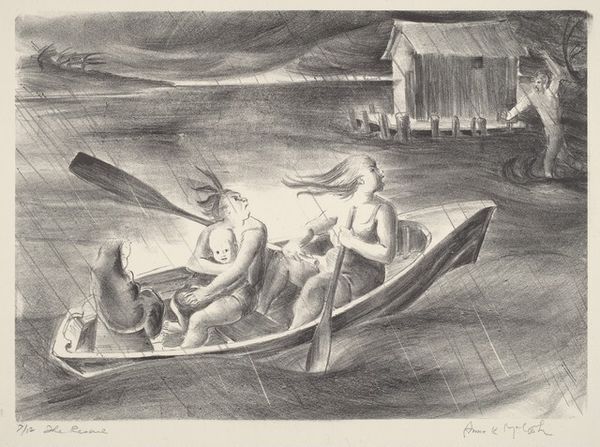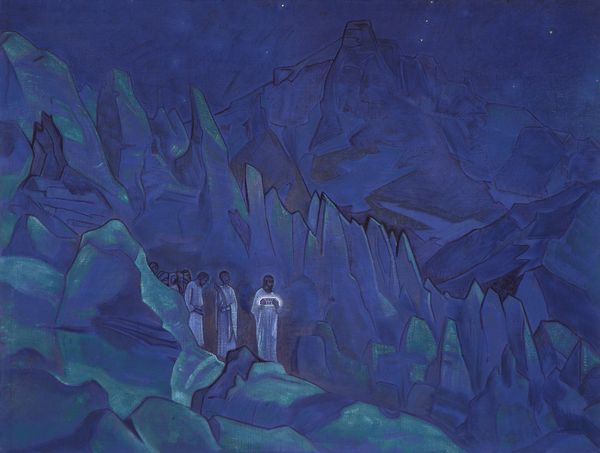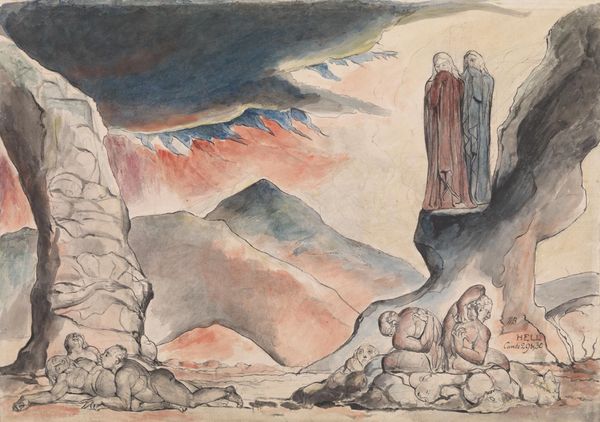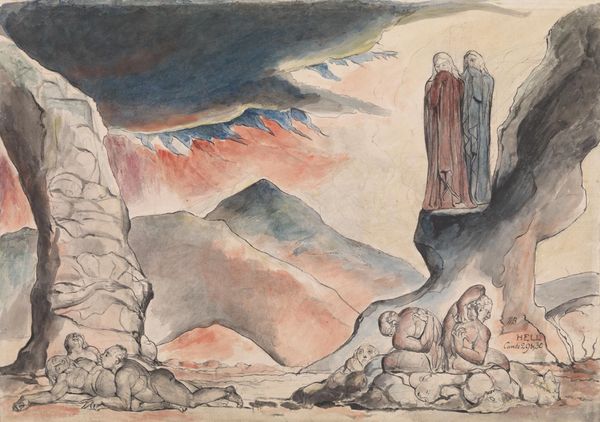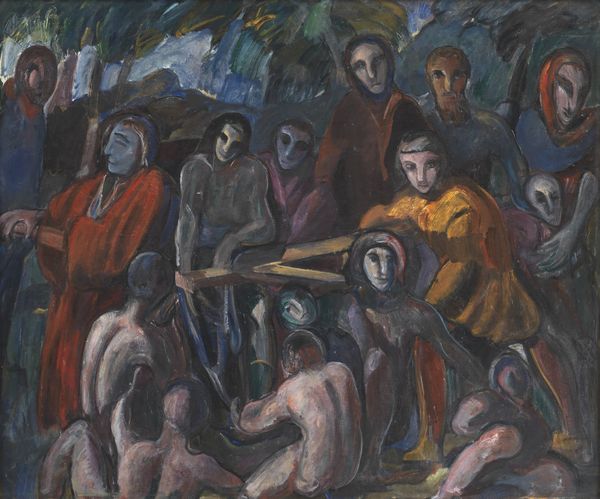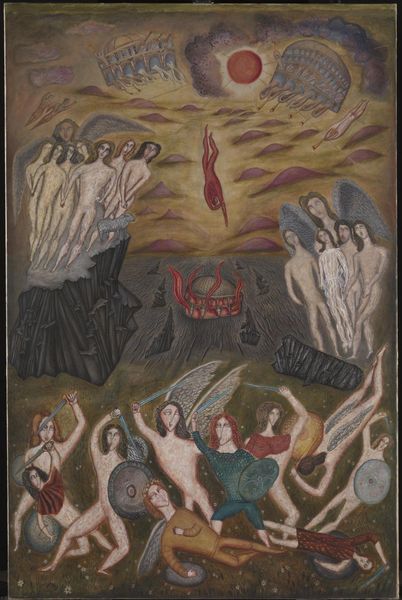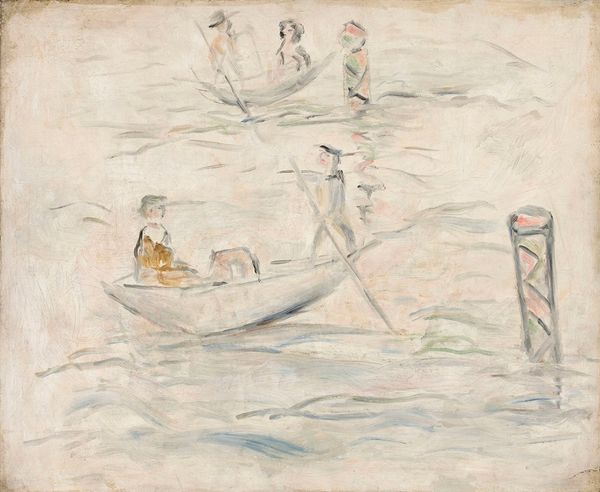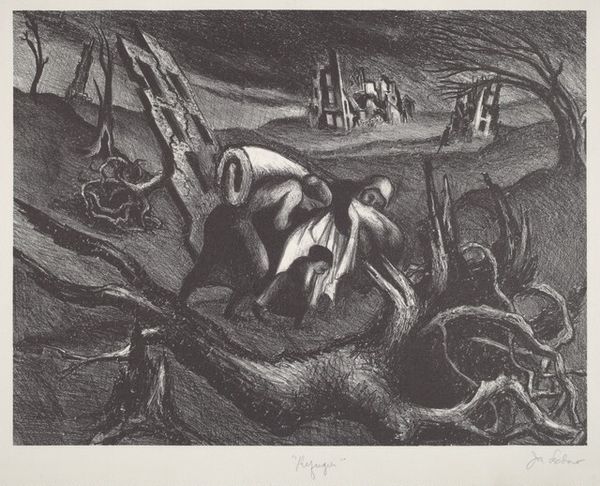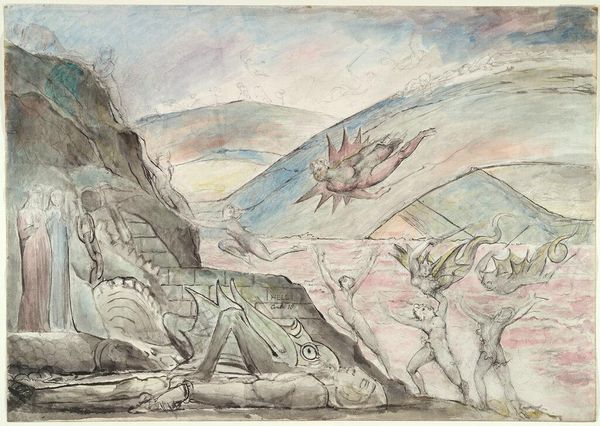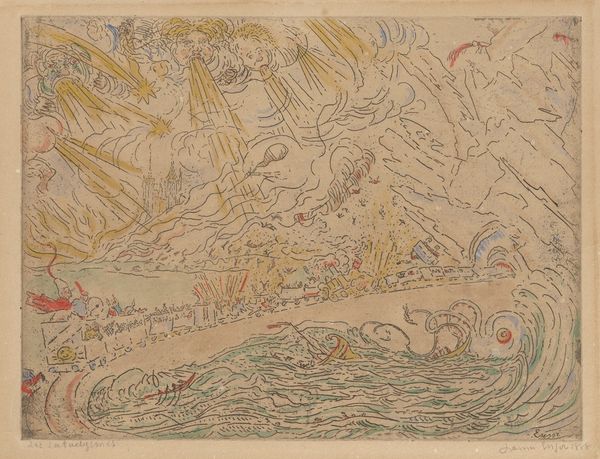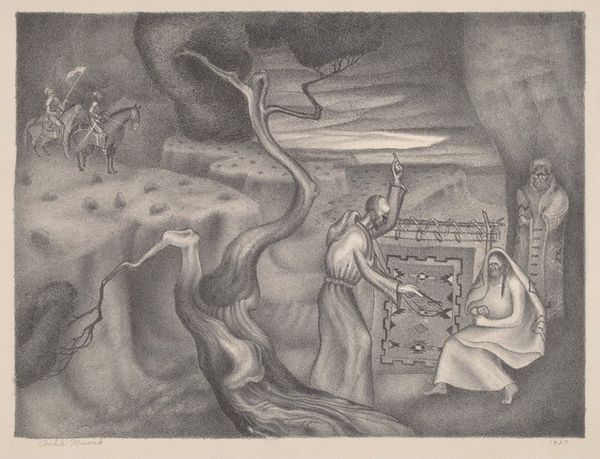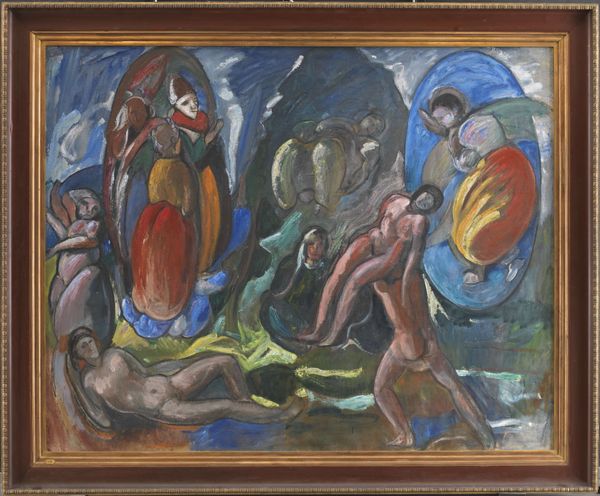
Dimensions: support: 1104 x 1473 x 6 mm frame: 1225 x 1590 x 88 mm
Copyright: © Tate | CC-BY-NC-ND 4.0 DEED, Photo: Tate
Curator: Cecil Collins's "The Quest," currently held at the Tate, features figures in a boat traversing what looks like a dark, possibly turbulent sea. Editor: The immediate impression is one of starkness – the composition and muted colors evoke a sense of unease, reflecting turmoil or uncertainty. Curator: Considering Collins’s interest in philosophy and spirituality, this piece perhaps reflects humanity’s ongoing search for meaning within a landscape of the unknown. Look closely at the application of paint, the textured surface. How does it suggest the working process? Editor: It feels like a commentary on social and political alienation after the World Wars. The figures appear almost spectral, rowing against a threatening backdrop, which resonates with postwar anxieties about identity and purpose. Curator: The very act of layering and reworking the paint surface creates this sense of searching. It mirrors the figures' quest and also Collins's own process of making. Editor: I see the figures as archetypes—perhaps representing different facets of the human psyche, their journey symbolic of inner exploration during times of societal distress. Curator: Precisely. The materiality and the making are inseparable from the narrative; the texture becomes the terrain they navigate. Editor: Absolutely, it is a powerful reminder that art often serves as a critical lens through which we can examine the complexities of our shared human experience.
Comments
Join the conversation
Join millions of artists and users on Artera today and experience the ultimate creative platform.
tate 7 months ago
⋮
In a small red boat, equipped with neither sails nor oars, six people with white, staring faces float among treacherous, blackened icebergs. This mysterious painting has been interpreted in different ways; in particular, it has been linked to TS Eliot's poem The Waste Land, and its references to Arthurian legend and the search for the Holy Grail. In general, Collins seems to have been concerned with the corrupting influence of the material world. This concern was gathering strength at the time he was working on this painting, in the autumn on 1938, on the eve of the Second World War. Gallery label, September 2004
